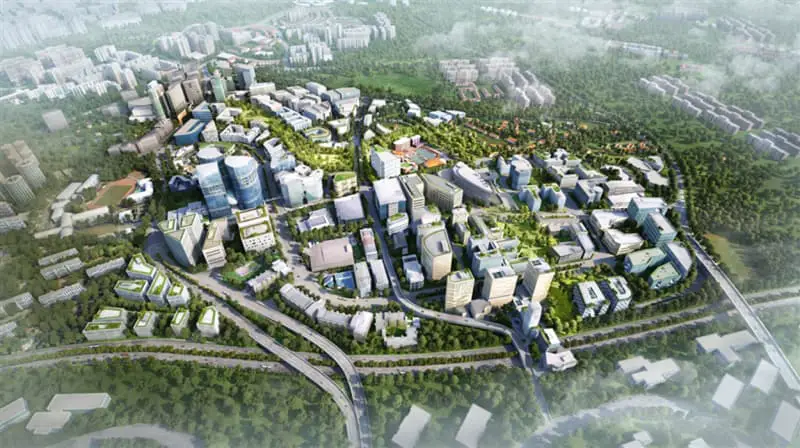Sustainable architecture and urban planning, to many, are nothing more than trending topics or current fads in the architecture and design business communities—but to some, it’s the new normal. In many megacities across the globe, citizens are moving to densely populated areas. In responses, construction businesses and architects are investing in new ways. They are building more sustainable structures that work with the immediate environment in terms of design and sustainability. If you are planning to invest in real estate, this sense of sustainable urbanism is the way to go.
Investing In Lagos, Nigeria
Take, for example, the work of architect Kunle Adeyemi. In 2012, Adeyemi designed a new school, Makoko Floating School, in a small neighborhood resting on a lagoon in Lagos, Nigeria. Although the school eventually collapsed, Adeyemi’s vision is revolutionary and worth examining—both its successes and failures offer much to designers and architects. Rather than continue to build in an area that floods with every rainstorm, Adeyemi chose to work in tandem with the environment and built a school which floats, and even better, he used only locally-sourced, renewable materials. This resulted in a school that a community was able to construct without significant financial investment or damage to the environment. The building ultimately collapsed because of maintenance—what was missing from Adeyemi’s equation was a plan for the community (replacing materials that have been stolen or damaged and routinely examining the building for faults) to preserve the building. In the last five years, more and more of an emphasis has been placed on these sorts of smaller-scale sustainability projects.
Sustainable Neighborhoods In Europe
Though we haven’t yet seen fully sustainable cities, we have seen an attempt at sustainable urbanism executed on a smaller scale, primarily in Europe. Urban sustainability projects developed on a local scale, which are often called “sustainable neighborhoods” have become increasingly popular. These neighborhoods attempt to retain the historic character and personality of the area while attempting to achieve a balance with regard to economic, environmental and project management certification goals. These neighborhoods can end up serving as case studies and models for application in other cities not only in Europe, but in the United States and across the planet.
Last month a study published by the Urban Planning Institute of the Republic of Slovenia analyzed two such sustainable neighborhoods in Northern and Western Europe: Vauban in Freiburg, Germany and West Harbour in Stockholm, Sweden. Vauban has a population of 5,000 and is built on a former French military base, while West Harbour has a slightly smaller population (4,300) and was the former home of a port/shipyard and industrial area.
Electric Investments In Vauban
According to the study, the Vauban neighborhood is fueled by 80% woodchips, 20% natural gas and “over 65% of the total electricity used in the district of Vauban is generated through photovoltaic panels, which are owned by the local residents grouped in various solar energy cooperatives.” In other words, the bulk of business energy usage is renewable. Additionally, many of the homes and businesses use vacuum toilets—these are toilets that allow for the collection and disposal of human waste through a network of pipes that creates a continuous vacuum, rather than relying solely on water. These toilets require only a half-gallon of water to flush, compared to the American toilet which, according to the Regional Water Providers Consortium, “can use 3.5, 5, or even up to 7 gallons of water with every flush.”
But Vauban doesn’t only transport their waste sustainably, they also severely prohibit the use of automobiles. The roads are suited more for pedestrians and bicyclists, with several bus and tram lines, and parking is, for the most part, prohibited in the neighborhood. Only 15% of people in Vauban own cars, while the national average in Germany is 51.7%. They’ve achieved this by building densely—shops, restaurants, workplaces, and homes are all within footsteps of one another, leaving space for parks and a large central community space for residents to meet.
Western Harbour’s Water Conservation
Another example of achievement in sustainable urbanism is the Western Harbour neighborhood in Stockholm, Sweden. Western Harbour beats Vauban in terms of energy usage, boasting 100% renewable energy (mainly solar and wind). And like Vauban, Western Harbour is water conscious—many commercial buildings collect rainwater for use in gardens, laundry, and flushing toilets. What little excess waste remains is also put to use—they harvest biogas which is used, in part, to fuel their buses and automobiles.
Of course, Western Harbour does not have the density of Vauban and many of its residents are resistant to giving up car ownership. About 44% of Western Harbour owns cars which is only a little bit less than the natural average.
Sustainable Urbanism In The United States
Any conscious urban design firm must continue to examine these examples and more across the world in order to keep up with the changing climate and the rapid urbanization of the planet. More than ever, the population is shifting away from rural areas and into established cities. If we can’t change the entire city, these projects show us how to approach making changes on a local scale in neighborhood in large cities like Lagos, Freiburg and Stockholm.
Image from https://divisare.com/authors/48513-s333-architecture-urbanism
 Business First Family Business, Accounting, Finance, Investing, Marketing And Management
Business First Family Business, Accounting, Finance, Investing, Marketing And Management
